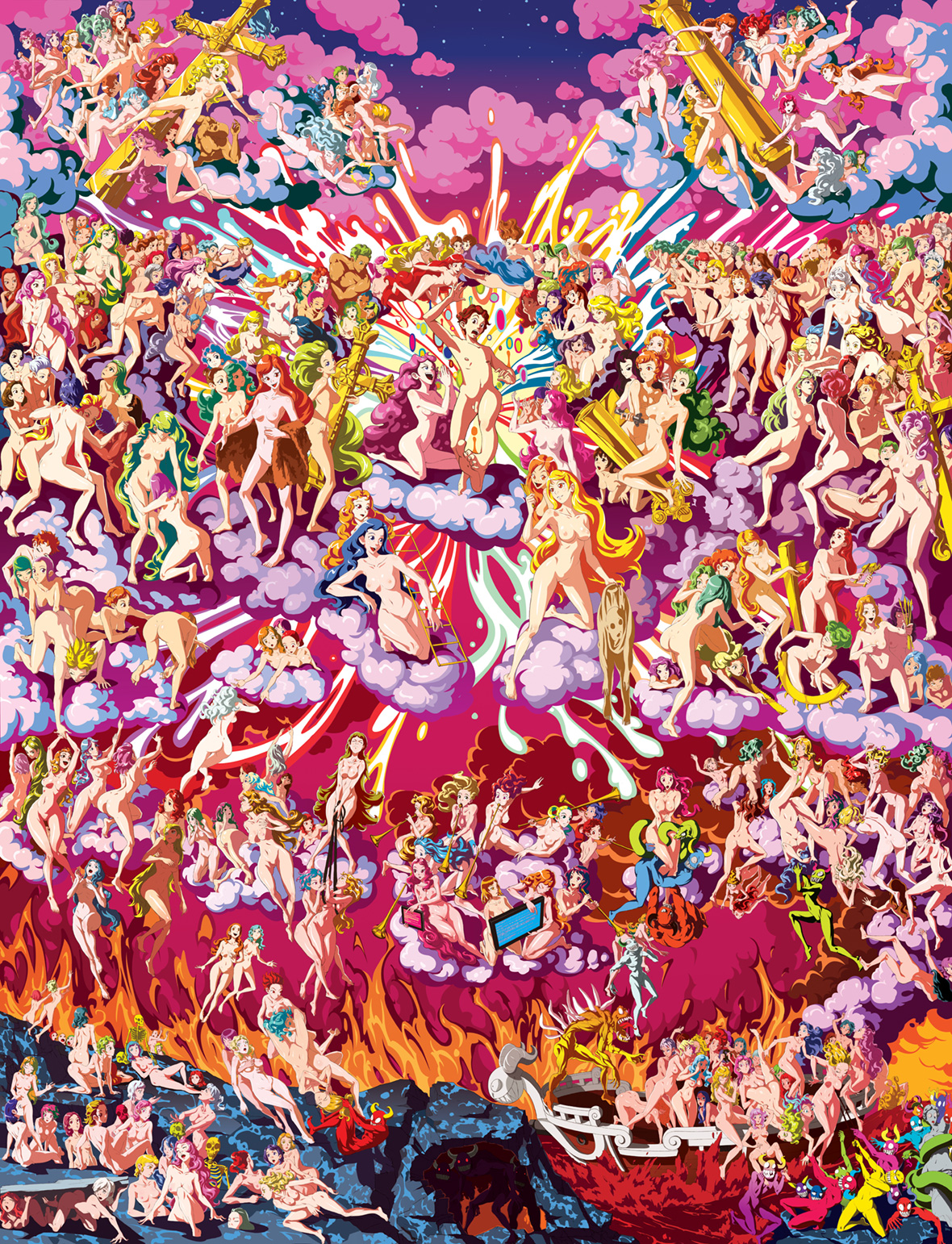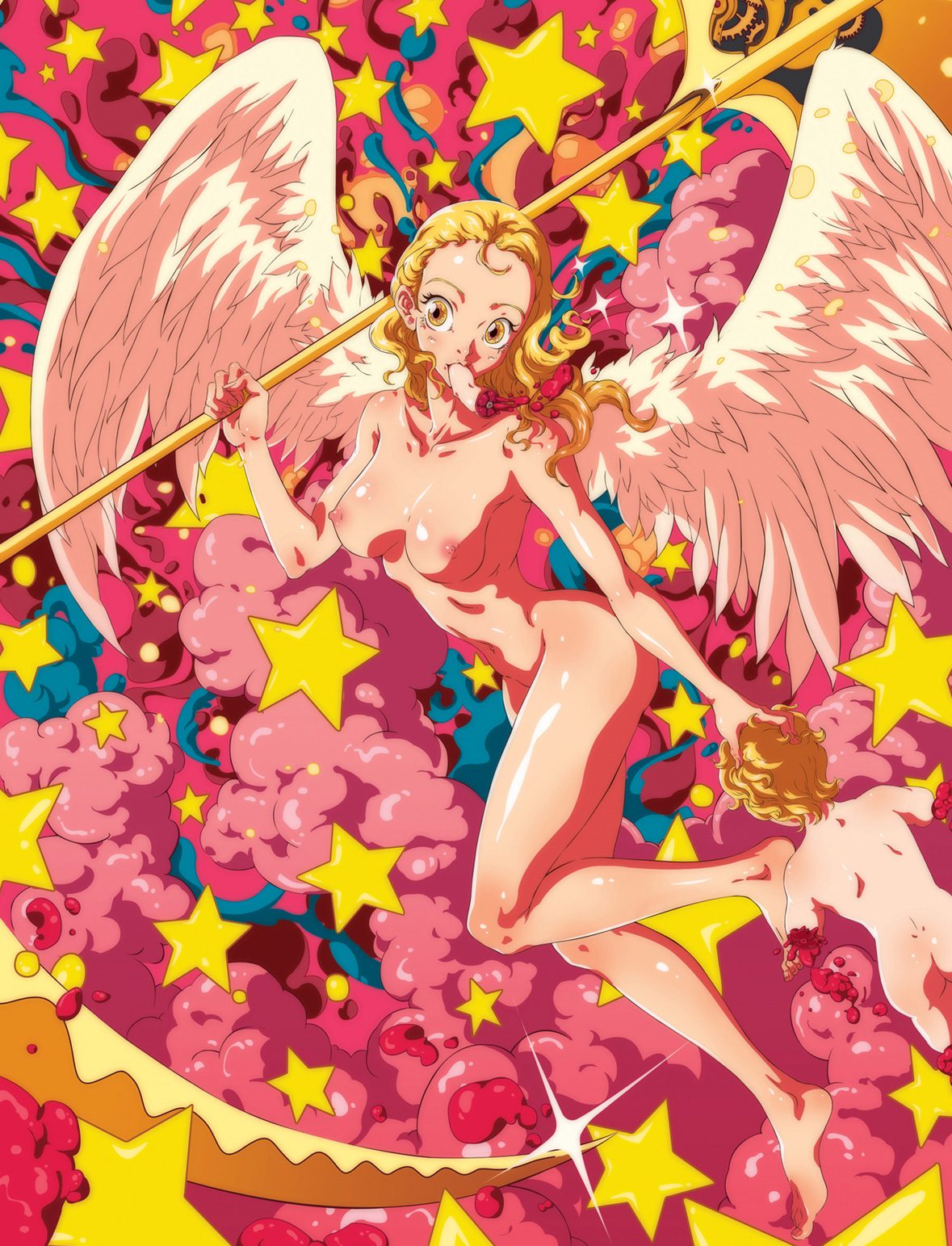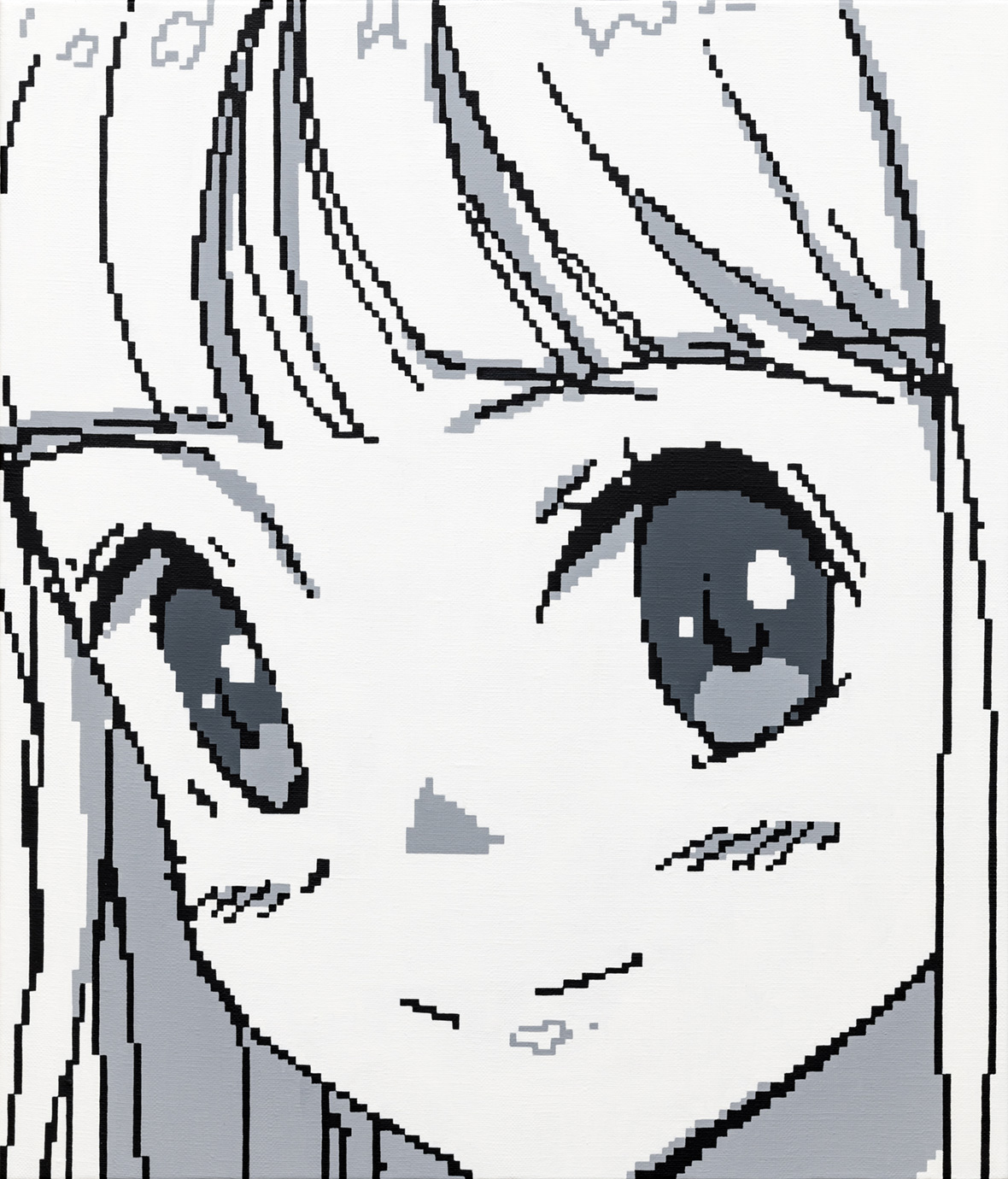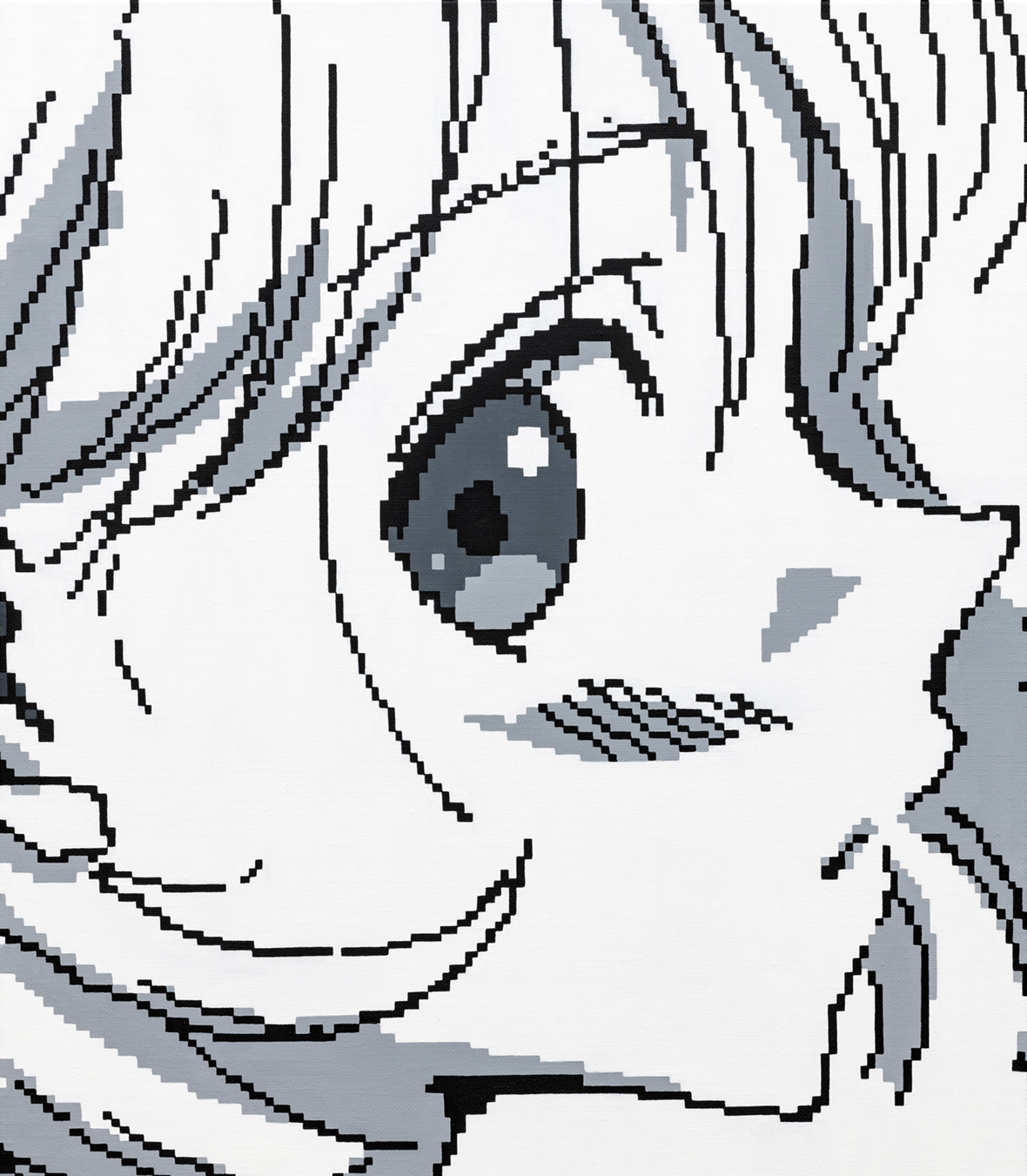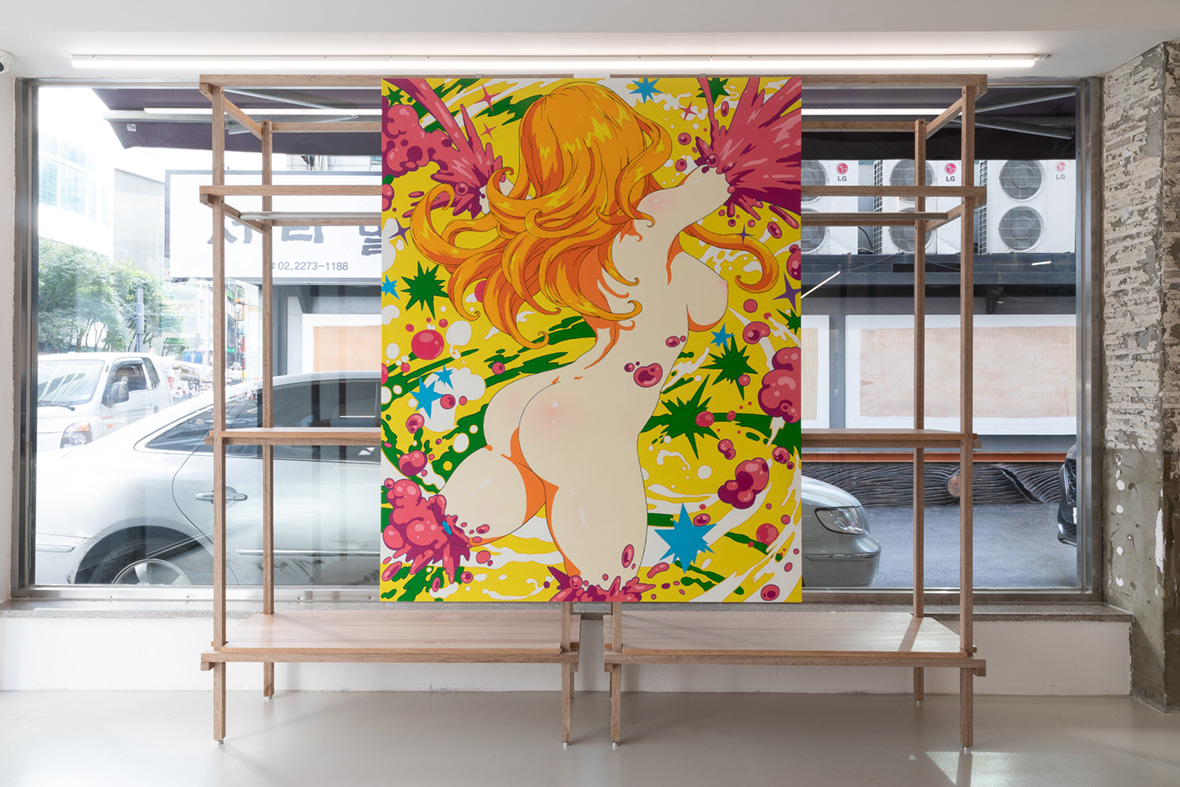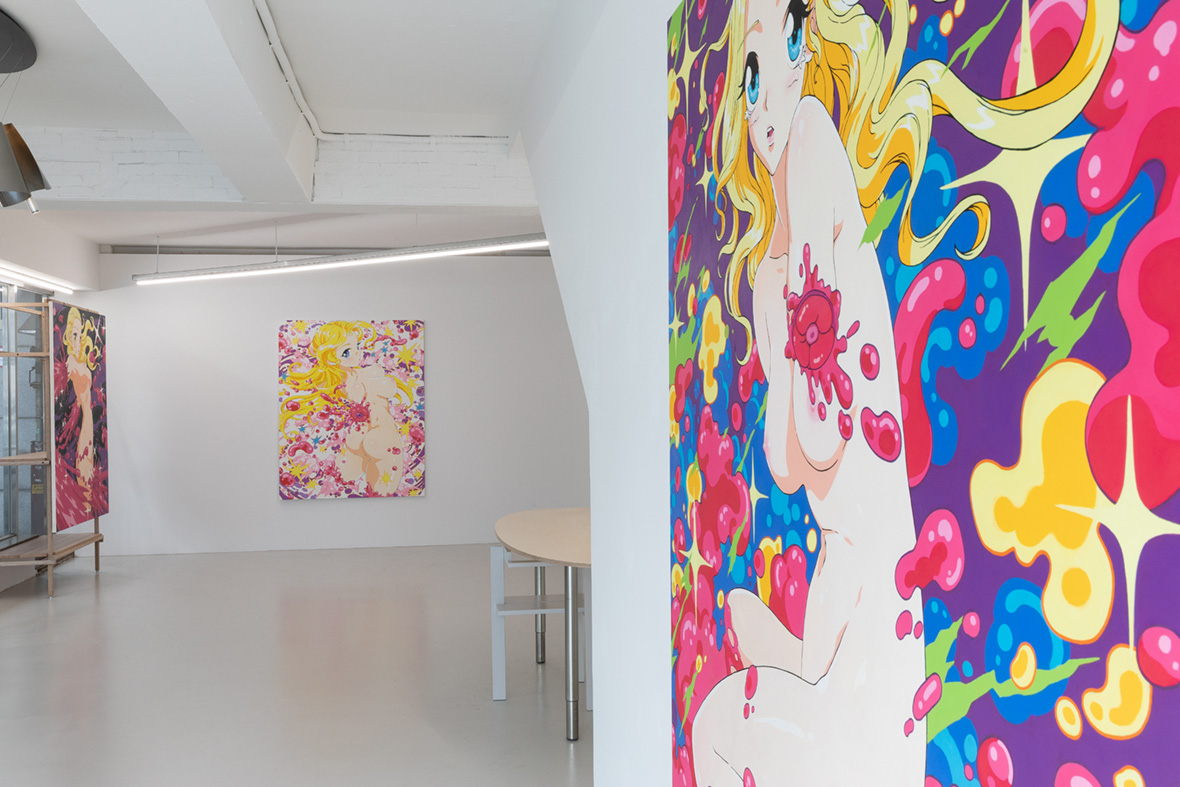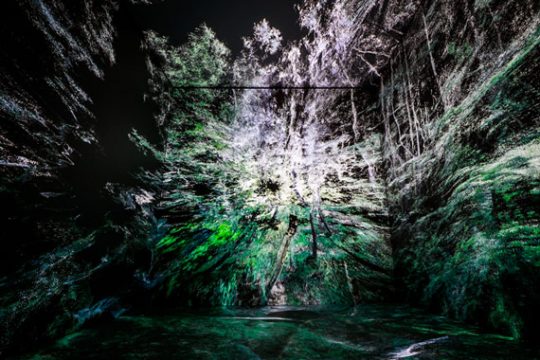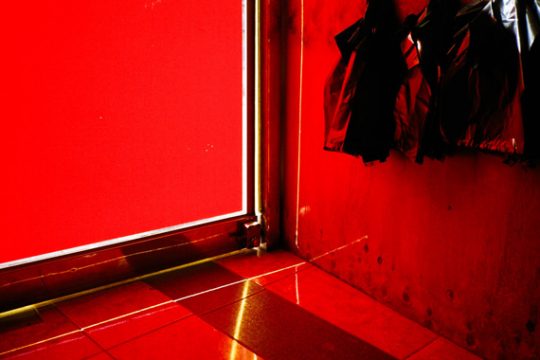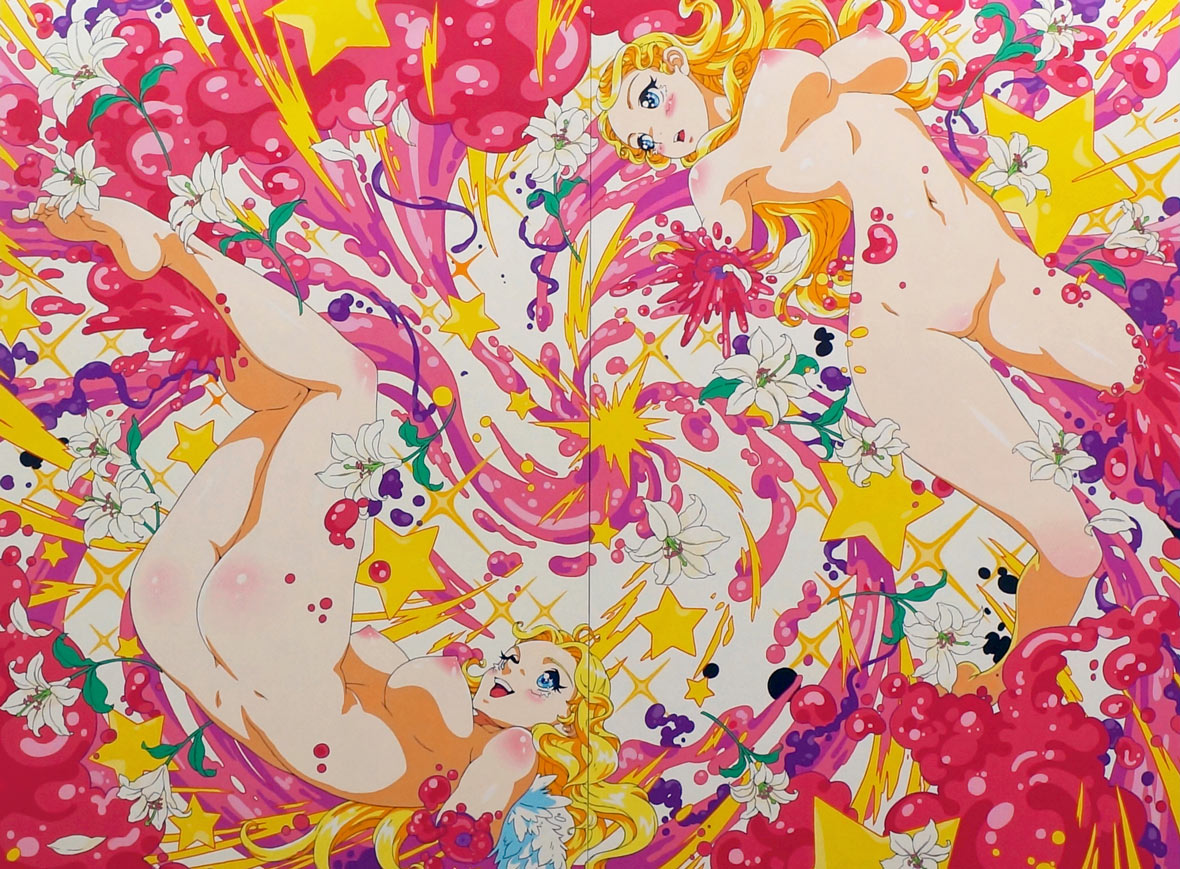
Renaissance artists looked at the Greco-Roman world as a golden era of art. They strived to match the archetypical work of the ancient greats but heighten it with the techniques and aesthetics of their own time. Similarly, South Korean artist Lee Yunsung looks at the past for inspiration, tapping into both milestones of European art history to compose brightly colored oil, acrylic, and digital paintings. He recreates scenes from classical mythology and the Bible but in a highly sexualized manga style, using all the freedom the genre provides.
“My work is a reconstruction of old narratives into a contemporary expression, but it isn’t easy to define my intention,” he says. “It would be more accurate to say that, out of various attempts, I found ‘odd combinations’ to be a way of creating new meanings.”
文艺复兴时期的艺术家将希腊罗马的古典艺术视为艺术的黄金时代,致力于达到古典大师的杰作水准,同时以自己时代的新技巧和美学风格进一步升华。同样,韩国艺术家 Lee Yunsung 也从过去找寻灵感,生于 1985 年的他,借鉴了欧洲艺术史上的两大里程碑,创作出色彩鲜艳的油画、丙烯画和数字绘画。他借助漫画的自由无拘,以情色化的漫画风格,重新演绎着古典神话与圣经的场景。
他说:“我的作品旨在以当代的表达方式,重构旧的叙事,但要确定我的意图并不容易。更准确的说法是,通过各种尝试,我发现‘奇怪的组合’是创造新意义的方式。”
Perhaps the most striking example is his early work, The Last Judgement, a digital piece based on Michelangelo’s eponymous fresco at the Vatican. Lee maintains the scale and drama of the original. There’s confusion, viciousness, and joy—the blessed rise to heaven and the damned succumb to hell. However, apart from two male figures and several demons and skeletons, only naked youthful women populate Lee’s version. Jesus is right at the center, but instead of strong and willful, he appears as a foolish-looking boy, overwhelmed by his surroundings.
他最引人注目的作品莫过于早期的一副《最后的审判》(The Last Judgement),这是以米开朗基罗的梵蒂冈同名壁画为原型创作的数字作品。Yunsung 保留了原作的巨大篇幅和戏剧性,在其中充斥着混乱、邪恶和欢乐——受祝福的人升上天堂,受诅咒的则坠入地狱。然而,在 Yunsung 这幅画里,除了两个男性角色和一些恶魔和骷髅,放眼望去,全是赤裸的年轻女性角色。画面正中的男孩是耶稣,但他看起来一点也不强大或高高在上,相反,他看起来只是一个傻乎乎的男孩,被四周的场景弄得惊慌失措。
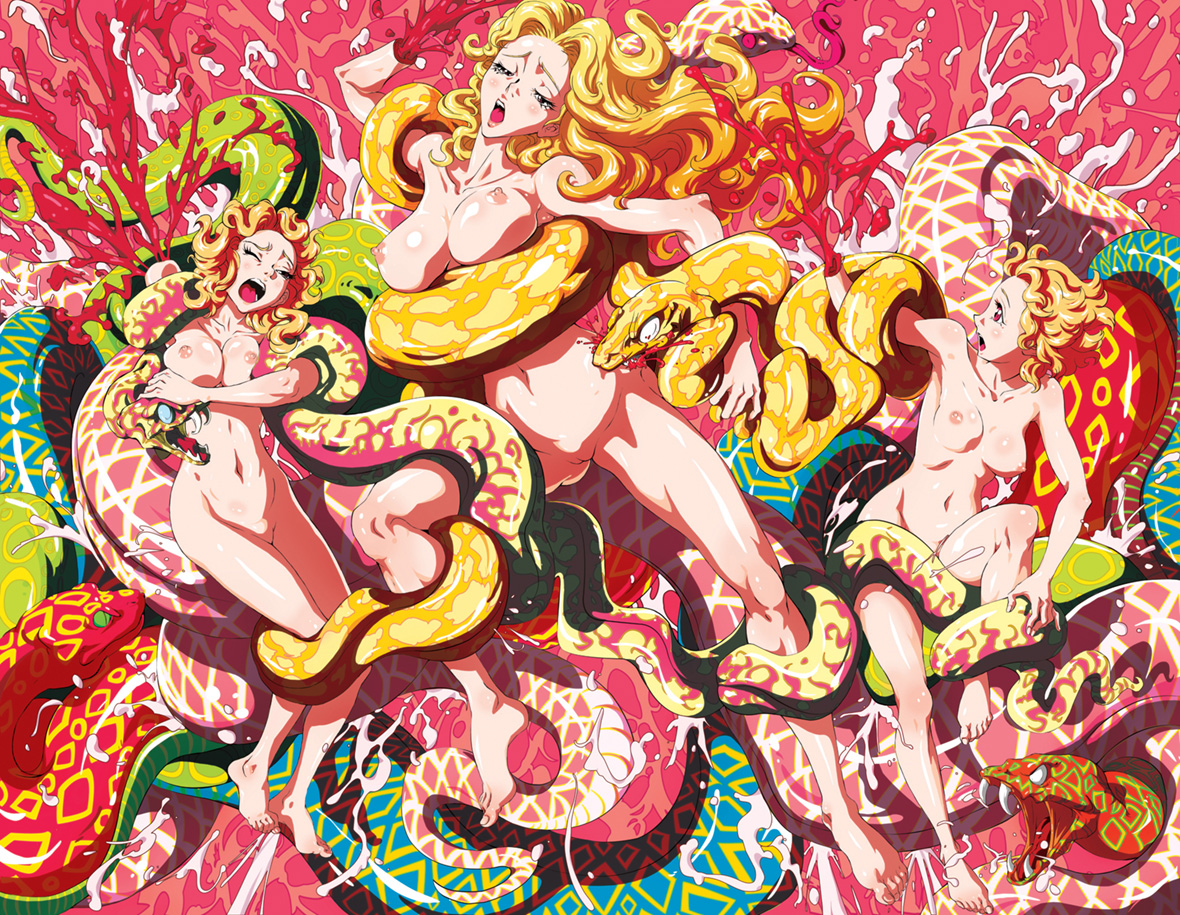
In another digital work, Lee paints Laocoön and his Sons, an ancient sculpture from the Hellenistic period, also at the Vatican today. In marble, the original depicts the father and his two sons strangled by two serpents sent by the Gods to kill them. Lee replicates the men’s battle and body poses but replaces them with three naked women, also in total despair while fighting with the massive reptiles. The women have their arms amputated in the exact spots where the statue is broken off.
在另一幅数字作品中,Yunsung 画的是古希腊时期的雕塑作品《拉奥孔和他的儿子们》(Laocoön and his Sons),这件大理石雕塑如今也被珍藏于梵蒂冈,描绘了拉奥孔和他的两个儿子被众神派来的巨蛇缠死的画面。Yunsung 画了三个裸体的女子,复刻了原作中父亲与儿子的挣扎和身体姿势,以及与巨蛇缠斗时的绝望,甚至还保留了原作雕像折断的手臂。
Women with mutilated appendages are a recurrent theme in Lee’s works, especially in the series Torso. They gush out venous blood through their open wounds, flowing out and filling the background with kawaii shapes, such as floating stars and hearts. This series was inspired by the damaged marble statues from the ancient world and the ending scene of Ghost in the Shell. The heroine of the latter, cyborg Makoto Kusanagi, has her body dismembered while fighting a machine. She appears naked, ecstatic, and vulnerable—just like Lee’s women.
肢体残缺的女性是 Yunsung 作品中反复出现的主题,尤其是在《躯干》(Torso)系列中。在他笔下,这些女性敞开的伤口血液喷涌,变成漂浮的星星和心形等可爱形状,填充于背景中。该系列的灵感源自残缺的古典大理石雕像以及 1995 年赛博朋克动画片《攻壳机动队》的结尾场景。在影片里,女主角机械人草薙素子在与机器搏斗时,身体被肢解,看上去赤裸、狂喜又脆弱,正如 Yunsung 笔下的女性。

In the oil painting series Danae, Lee reimagines the story of the supposedly beautiful Greek mythical princess. As legend has it, Danae’s father imprisoned her in a chamber with no doors or windows. Zeus, who desired her, broke into the chamber and impregnated her with Perseus. Upon finding out, Danae’s father locked her and her newborn son inside a wooden chest, casting it into the sea. Lee paints Danae in three different hues—pink, blue, and yellow—and in the various emotional states that correspond to her tribulations. He split the paintings into different polygonal sections as if different containers of a manga page.
He’s also painted other deities and the twelve Olympians as glorified, youthful, and innocent women. In a sudden change of tone, Lee represents the Three Graces—eternally young and lovely goddesses—in achromatic oil on canvas paintings. Conversely, these non-digital paintings bare the pixelate effect of zoomed-in computer images.
在油画系列《达那厄》(Danae)中,Yunsung 重新构想了这位美丽的希腊神话公主的故事。传说达那厄的父亲把她囚禁在一个没有门窗的密室里。爱慕她的宙斯闯进密室,使她受孕并生下了珀尔修斯(Perseus)。达那厄的父亲发现后,把她和刚出生的儿子锁在一个木箱里,扔进了海里。Yunsung 用粉色、蓝色和黄色三种色调描画达那厄,并展现了与她的苦难相对应的不同情感。他按照漫画的分格形式,把整个画面切分成不规则的几个部分。
此外,他还把其他神灵和奥林匹斯十二主神描绘成耀眼、年轻和清纯的女性形象。在创作“美惠三女神”时,Yunsung 一改色彩风格,选择了黑白色调的油画形式,不同的是,这些非数字画作却又呈现出电脑图像放大后的像素化效果。
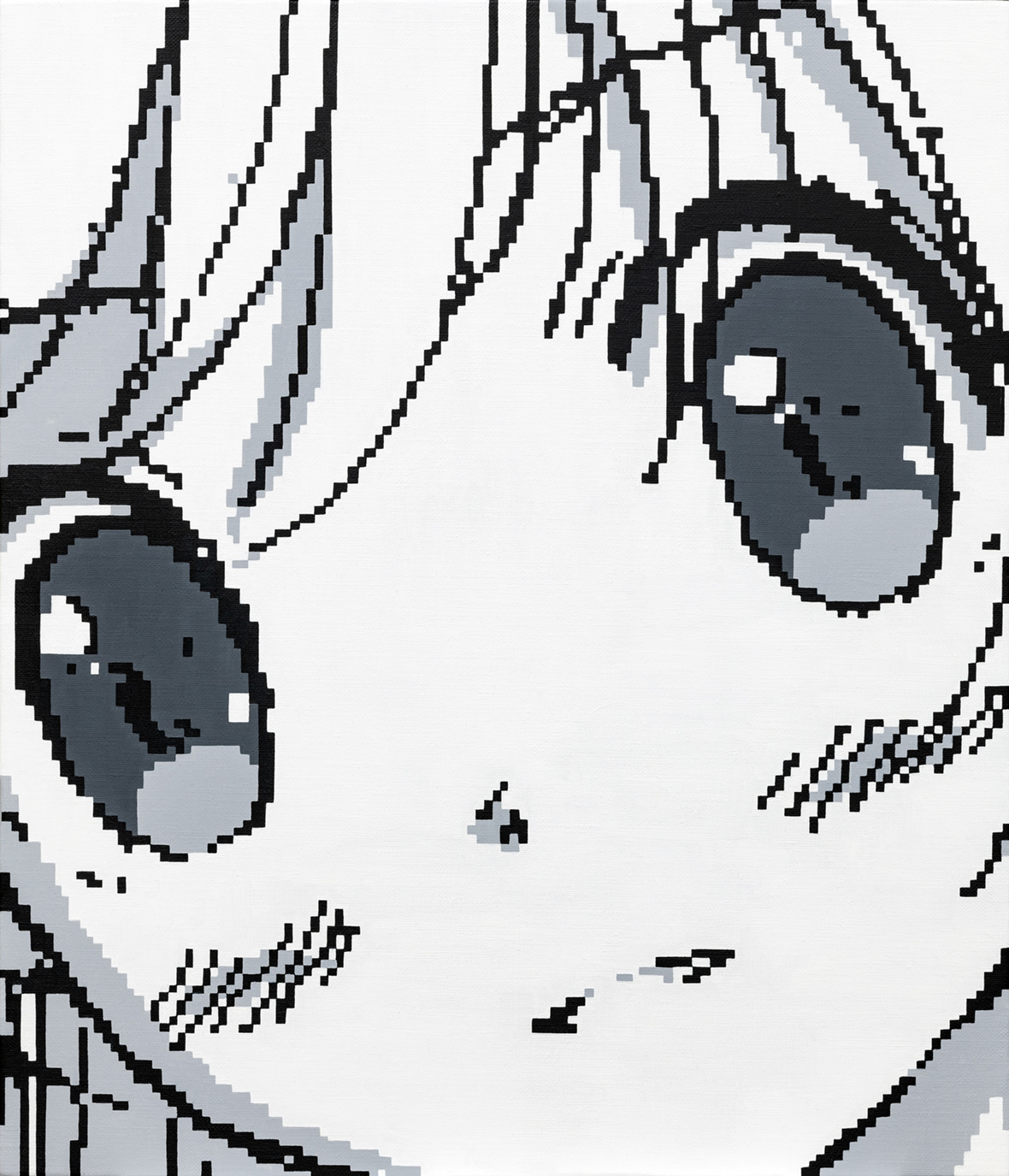
Lee admittedly borrows elements of moe for his paintings. In manga culture, moe is a rather abstract emotion embedded with protective affection towards sweet and adorable characters—usually young-looking females. Typically, moe-style females appear vulnerable, with large and expressive eyes, abundant and unnaturally colored hair, blushed cheeks, and sensual bodies. Like in Lee’s depictions, they provoke both protective instincts and sexual desire.
But he also borrows from other underground corners of manga culture. Notably, the controversial ero-guro, deemed by many as revolting but arousing sadistic enjoyment in others. The sub-genre blends eroticism with the grotesque and decadent, often involving violence and rape, with an overabundance of blood and dismembered bodies.
在 Yunsung 成长的年代,1998 年,日本流行文化和互联网风潮席卷韩国,当时还是一名初中生的他也沉迷不已。他说:“我平生第一次买了一台电脑,装好后,我马上连上网,开始浏览日本漫画论坛。”
毕业于中央大学的美术专业的他主修绘画。在那里,他还深入学习西方古典绘画和艺术史。毕业后,他试图探索“古典叙事与当代流行文化的漫画风格之间的极端关系——一种营造相遇、冲突与和谐的结合”。
Yunsung 表示自己创作时借鉴了漫画的萌系(moe)元素。在动漫文化中,“萌”是一种相当抽象的情感,包含着一种对可爱角色(通常为年轻女性角色)的保护欲。通常,萌系风格的女性看起来楚楚可怜,有着生动的大眼睛、夸张的染色发型、红润的脸颊和丰满的身材。正如 Yunsung 笔下的角色,能激起人们的保护本能和性欲。
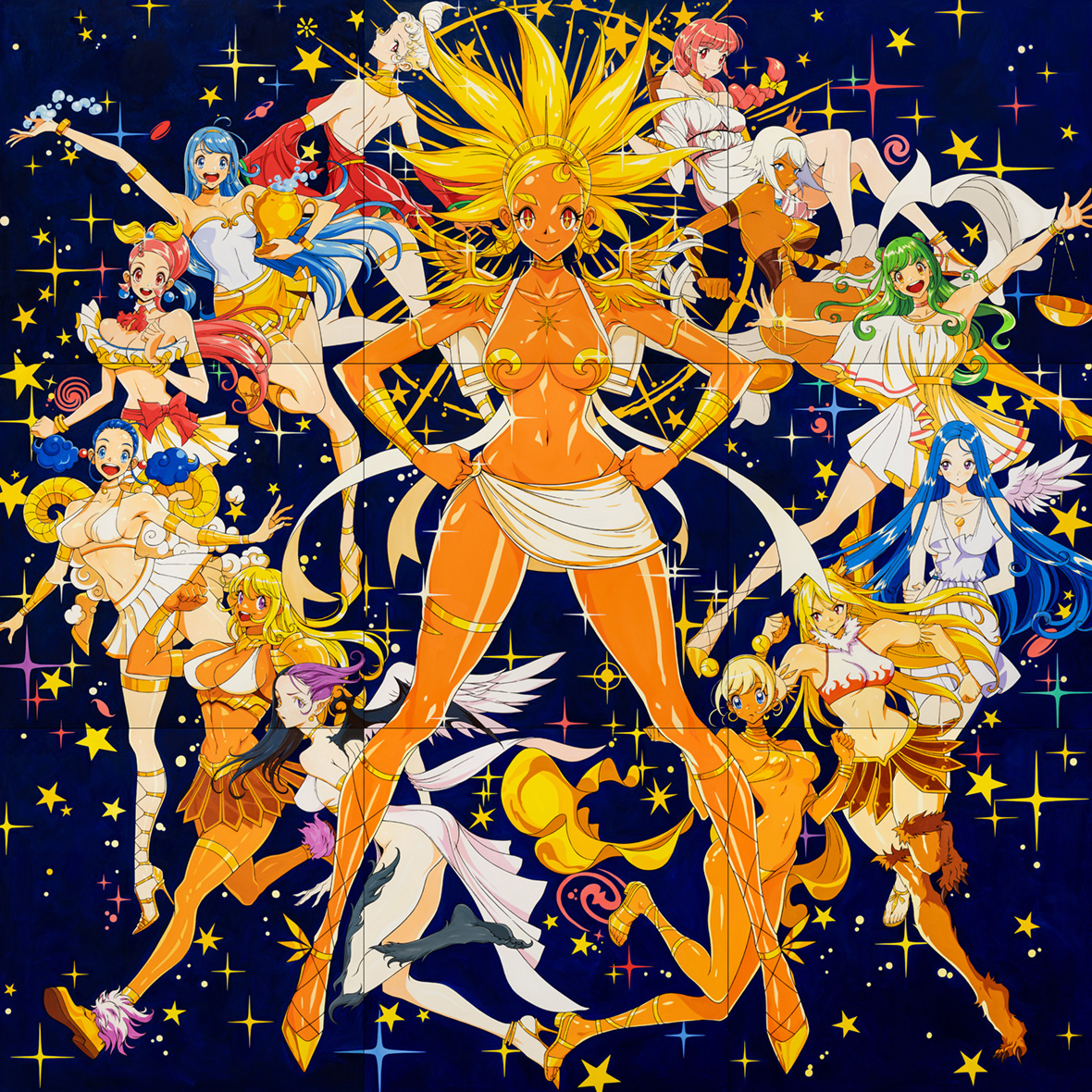
Lee was born in 1985 in Seoul. He was still in middle school when, in 1998, the dissemination of Japanese pop culture and high-speed internet in South Korea swept him off his feet. “I bought a computer for the first time in my life. After setting it up, I immediately connected to the internet and started browsing through Japanese manga clubs,” he says.
He received his Bachelor of Fine Arts in painting from Chung-Ang University. There, among other subjects, he studied classical Western paintings and art history intensely. Upon graduation, he sought to explore “the extreme relationship between classical narratives and the comic style of contemporary pop culture—a composition that creates encounters, conflicts, and harmony.”
与此同时,他还借鉴了一些地下漫画元素,包括极具争议性“ero-guro”(情色)元素。对于这种漫画文化,有的人厌恶反感,但另一些人却从中获得施虐的快感,这种次流派混合了情色与怪诞颓废,还常常涉及暴力和强暴的元素,充斥鲜血淋漓与肢解的身体。
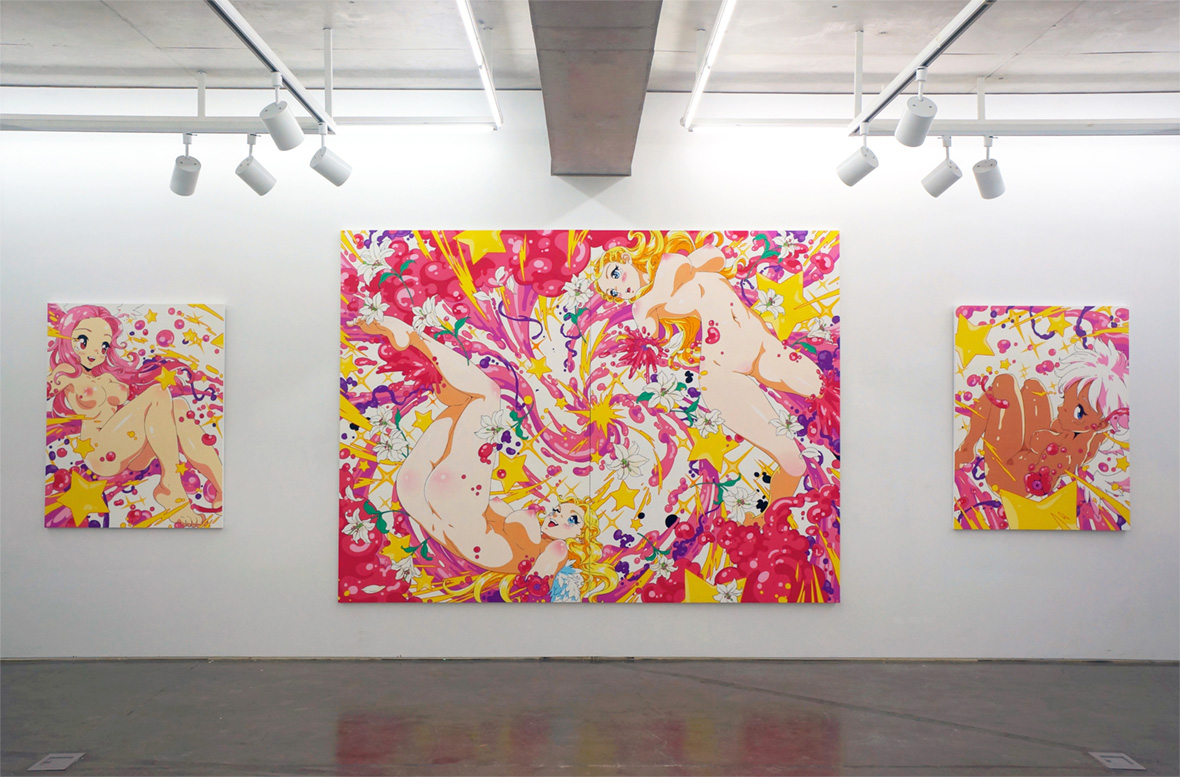
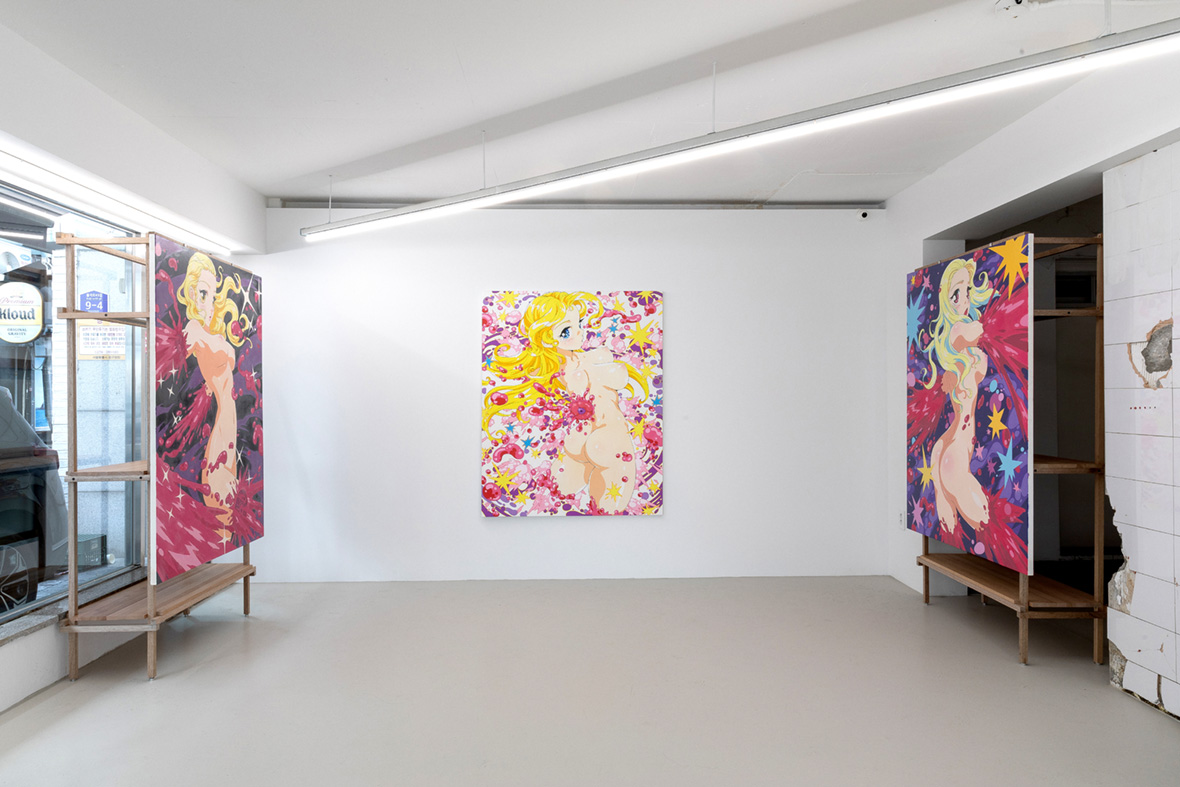
At first glance, Lee’s art could strike as misogynist. However, a more in-depth look reveals that there’s far more to it than tasteless porn for gore fetishists to hang on their walls. It relies on a mixture of styles with roots on his own experience and on the verses of ancient traditions—that are often misogynist themselves—to compose storylines replete with emotional investment.
Lee’s paintings are shocking explosions of color, but at the same time visceral and cute, tragical and comical. As he creates on the shoulders of giants from ancient and contemporary cultures, the spectrum of his references is boundless. Yet, everything is articulated as two connected ends, defined enough to yield meaning and sufficiently complex to have different interpretations. “I do not intend anything,” he says. “People can see my work differently depending on their background. A work of art is itself a mirror that reflects each viewer’s perception of the object.”
乍看之下,Yunsung 的作品有一种厌女主义。然而,走近细看,他的作品绝非纯粹为满足情色爱好者幻想的肤浅之作。他立足于自身的经历,借鉴经典传统——其中本身就充斥着厌女主义,巧妙糅合多种风格,讲述情感饱满的故事情节。
Yunsung 的绘画如同色彩的爆炸,既赤裸又可爱,是悲剧与喜剧的结合。他站在古往今来的时代巨人肩膀上创作,灵感的来源丰富多样。然而,每一件作品都是两种极端的结合:既清晰传达其意义,又足够复杂,提供不同的解读可能。他说:“我没有既定的意图。每个人都可以根据自己的背景,对我的作品有不同解读。艺术作品本身就是一面镜子,反映着每一位观众对事物的看法。”
Like our stories? Follow us on Facebook and Instagram.
Instagram: @reyunsung
Contributors: Tomas Pinheiro, Lucas Tinoco
Chinese Translation: Olivia Li

